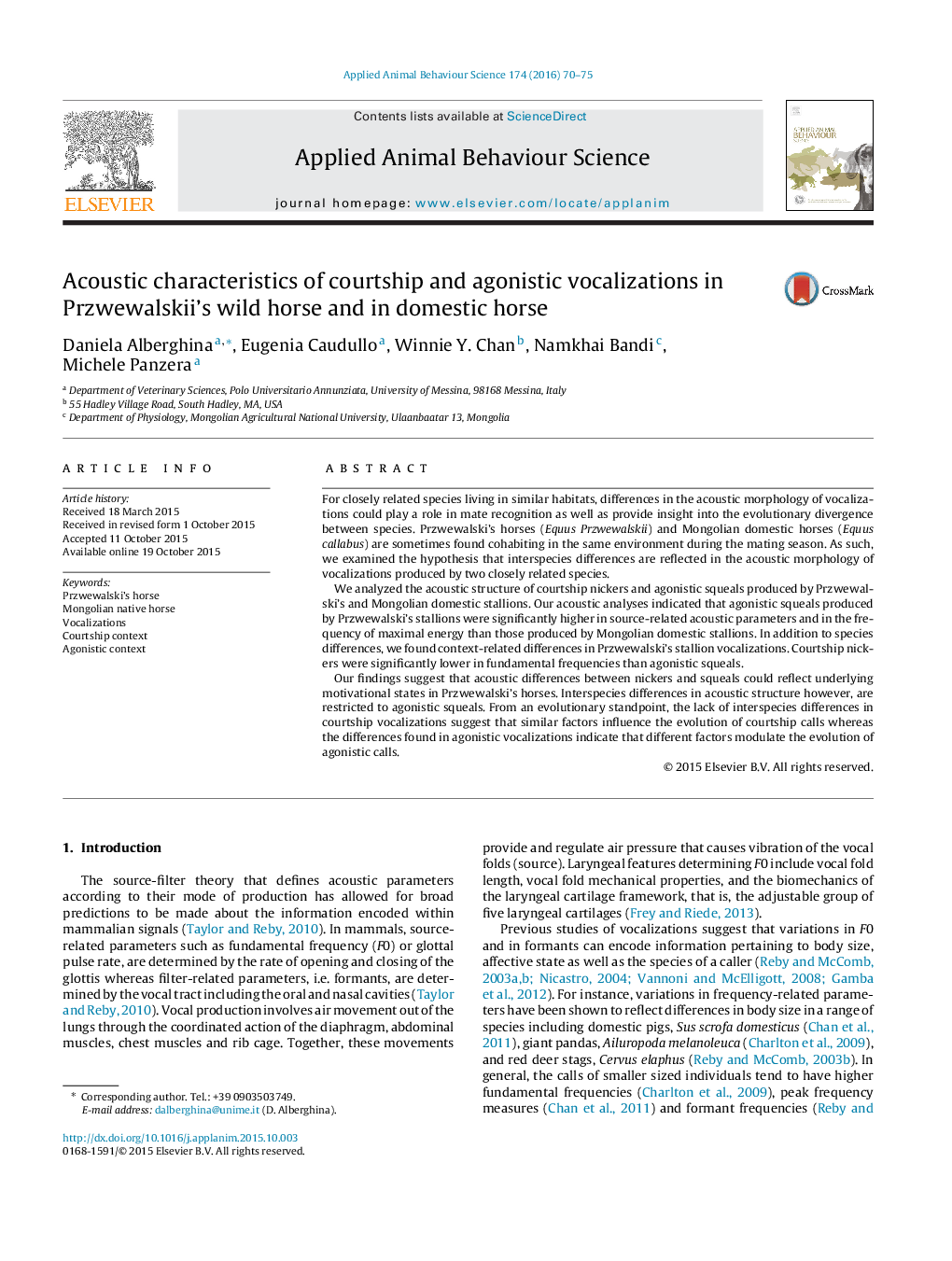| Article ID | Journal | Published Year | Pages | File Type |
|---|---|---|---|---|
| 6379356 | Applied Animal Behaviour Science | 2016 | 6 Pages |
â¢Courtship and agonistic calls of wild and domestic stallions were characterized.â¢Species-specific acoustic differences exist in the agonistic squeals of stallions.â¢Przewalskii's stallion squeals are higher in source-related parameters.â¢Courtship nickers did not differ between Pzrewalskii's and domestic stallions.
For closely related species living in similar habitats, differences in the acoustic morphology of vocalizations could play a role in mate recognition as well as provide insight into the evolutionary divergence between species. Przwewalski's horses (Equus Przwewalskii) and Mongolian domestic horses (Equus callabus) are sometimes found cohabiting in the same environment during the mating season. As such, we examined the hypothesis that interspecies differences are reflected in the acoustic morphology of vocalizations produced by two closely related species.We analyzed the acoustic structure of courtship nickers and agonistic squeals produced by Przwewalski's and Mongolian domestic stallions. Our acoustic analyses indicated that agonistic squeals produced by Przwewalski's stallions were significantly higher in source-related acoustic parameters and in the frequency of maximal energy than those produced by Mongolian domestic stallions. In addition to species differences, we found context-related differences in Przwewalski's stallion vocalizations. Courtship nickers were significantly lower in fundamental frequencies than agonistic squeals.Our findings suggest that acoustic differences between nickers and squeals could reflect underlying motivational states in Przwewalski's horses. Interspecies differences in acoustic structure however, are restricted to agonistic squeals. From an evolutionary standpoint, the lack of interspecies differences in courtship vocalizations suggest that similar factors influence the evolution of courtship calls whereas the differences found in agonistic vocalizations indicate that different factors modulate the evolution of agonistic calls.
